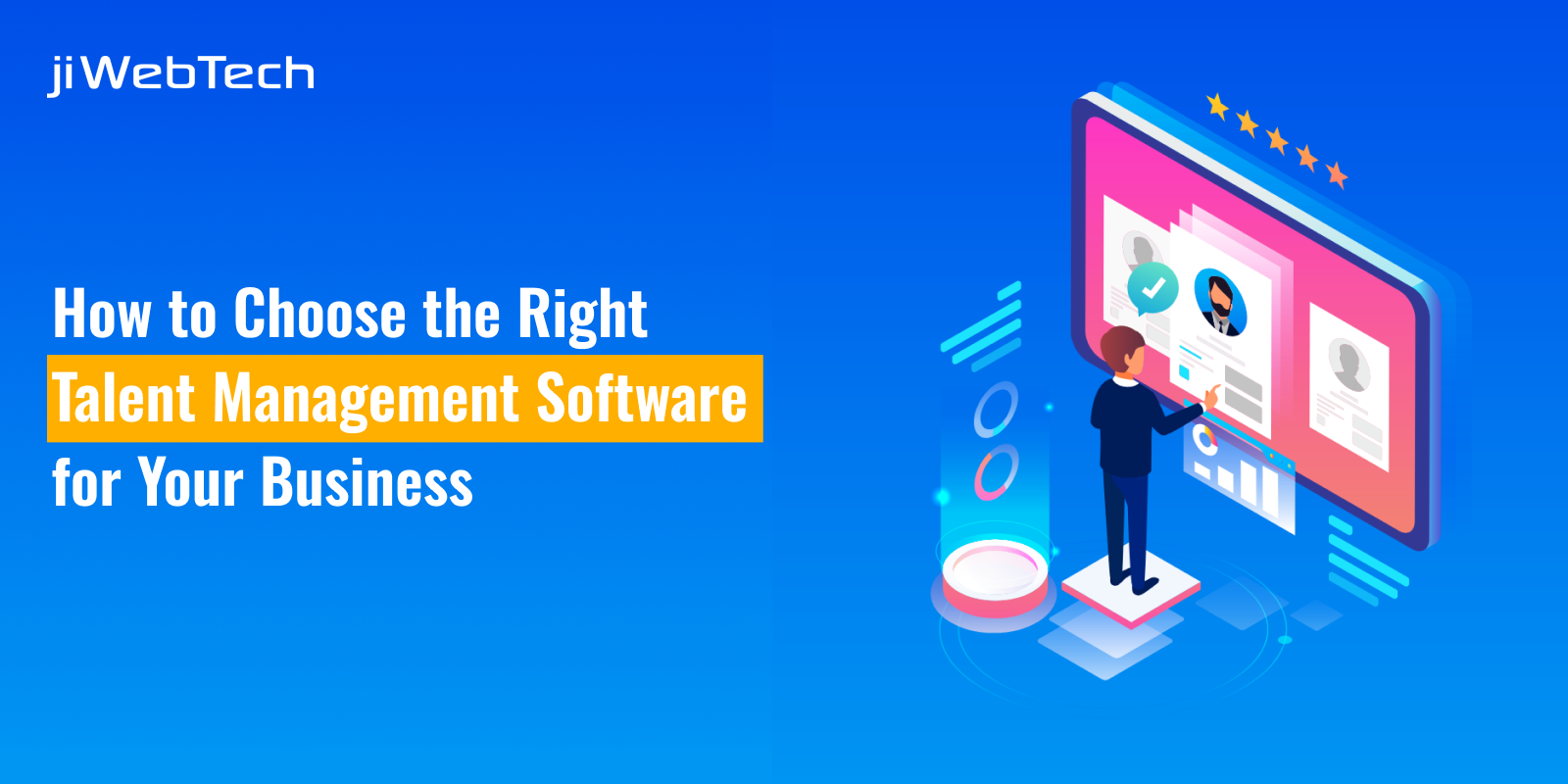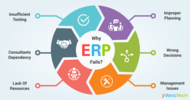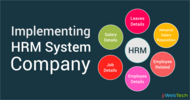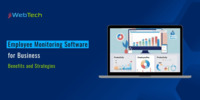- Oct 16, 2024
- Talent Management
- 2299
Share this post on:

Are you looking to hire the best talent? If you want your business to work well, you must hire the best talent. So, what is the solution? The solution is a Talent Management System. But choosing the right talent management system is not an easy task. To support you in your research work and help you make the right decision for your company, we have curated the perfect tips that will help you choose the right Talent Management System for your business.
Importance of Talent Management System
A Talent Management System is an integrated suite of tools and processes designed to manage an organization's human capital. It encompasses a range of functions, including recruitment, performance management, learning and development, succession planning, and employee engagement. The goal of a TMS is to ensure that an organization can effectively attract, develop, and retain the right talent to achieve its strategic objectives.
1. Attracting and Recruiting Top Talent
The first step in talent management is attracting the right candidates. In a competitive job market, this can be challenging. A well-designed TMS streamlines the recruitment process by leveraging data analytics and artificial intelligence to identify and engage potential candidates. It allows organizations to post job openings across multiple platforms, screen resumes efficiently, and use predictive analytics to assess candidate fit.
By enhancing the recruitment process, a TMS helps organizations build a strong talent pool, ensuring they have access to skilled individuals who can drive the company forward.
2. Enhancing Employee Onboarding
The onboarding process sets the tone for an employee’s experience within an organization. A TMS facilitates a smooth and engaging onboarding experience by automating administrative tasks, providing new hires with essential information, and integrating them into the company culture. Effective onboarding through a TMS can significantly improve employee retention rates, as it helps new hires feel welcomed and valued from day one.
3. Driving Performance and Productivity
Performance management is a critical component of any Talent Management System. By setting clear goals, tracking progress, and providing real-time feedback, a TMS helps employees stay aligned with organizational objectives. Performance management tools within a TMS enable managers to conduct regular performance reviews, offer constructive feedback, and recognize achievements.
Furthermore, a TMS allows for the analysis of performance data to identify high performers and areas for improvement. This data-driven approach helps in making informed decisions about promotions, raises, and developmental needs, ultimately driving overall productivity.
4. Supporting Learning and Development
In a rapidly changing work environment, continuous learning and development are essential. A TMS supports this by offering a range of learning and development tools, including training modules, e-learning platforms, and personalized development plans. By identifying skill gaps and providing targeted training, a TMS ensures that employees have the necessary skills to adapt and thrive.
Investing in employee development through a TMS not only enhances individual capabilities but also fosters a culture of growth and innovation within the organization. Employees are more likely to stay with a company that invests in their professional development, thereby improving retention rates.
5. Facilitating Succession Planning
Effective succession planning is vital for long-term organizational stability and growth. A TMS aids in identifying and nurturing future leaders by tracking employee performance, potential, and career aspirations. It helps organizations create succession plans that ensure critical roles are filled promptly and effectively when needed.
By proactively managing succession planning, a TMS minimizes the risks associated with sudden departures and ensures that the organization is prepared for future leadership transitions. This strategic approach to talent management helps maintain continuity and stability within the company.
6. Boosting Employee Engagement and Retention
Employee engagement is a key driver of productivity and job satisfaction. A TMS enhances engagement by providing tools for regular feedback, recognition, and communication. It helps create a transparent and inclusive work environment where employees feel valued and heard.
Engaged employees are more likely to stay with the organization, reducing turnover and the associated costs of recruitment and training. A TMS also enables organizations to gather and analyze employee feedback through surveys and other tools, allowing for continuous improvement in employee satisfaction and engagement strategies.
7. Streamlining Administrative Processes
Managing human resources can be a complex and time-consuming task. A TMS automates many administrative processes, such as payroll, benefits administration, and compliance tracking. This automation not only reduces the risk of errors but also frees up HR professionals to focus on more strategic activities.
By streamlining administrative tasks, a TMS helps organizations operate more efficiently and cost-effectively, allowing them to allocate resources to areas that drive business growth.
8. Leveraging Data for Strategic Decision-Making
One of the most significant advantages of a TMS is its ability to provide valuable data and insights. By analyzing metrics such as employee performance, turnover rates, and training effectiveness, organizations can make informed decisions about talent management strategies.
Data-driven decision-making allows organizations to identify trends, assess the impact of various initiatives, and adjust strategies to meet evolving business needs. This analytical approach helps organizations stay ahead of the competition and make strategic investments in their workforce.
Steps to Choose the Best Talent Management System for Your Business
In an era where human capital is a key differentiator for organizational success, selecting the right Talent Management System (TMS) is crucial. A well-chosen TMS can streamline your HR processes, enhance employee engagement, and drive overall business performance. However, with the myriad of options available on the market, choosing the best system for your business can be overwhelming. This blog will guide you through the essential steps to ensure you select a TMS that aligns with your organization's needs and goals.
1. Define Your Objectives and Needs
Before diving into the sea of TMS options, start by clearly defining your objectives and needs. Consider what specific challenges or goals you aim to address with a TMS. Some common objectives might include:
• Improving recruitment and onboarding processes
• Enhancing employee performance and development
• Streamlining succession planning
• Boosting employee engagement and retention
• Automating administrative tasks
Engage with key stakeholders, including HR personnel, department heads, and even employees, to gather insights into the system's requirements. This foundational step will help you identify the features and functionalities that are most critical for your organization.
2. Assess Integration Capabilities
A TMS should seamlessly integrate with your existing systems, such as Human Resource Information Systems (HRIS), payroll software, and other enterprise applications. Evaluate how well potential TMS solutions can integrate with your current technology stack. Integration capabilities ensure that data flows smoothly between systems, reducing manual data entry and minimizing errors.
Look for systems that offer pre-built integrations or APIs that can connect with your other software solutions. A TMS that integrates well with your existing tools will enhance operational efficiency and provide a unified view of your talent management processes.
3. Evaluate Usability and User Experience
The effectiveness of a TMS is closely tied to its usability. A system that is difficult to navigate or requires extensive training can hinder adoption and reduce its overall impact. Evaluate the user interface and experience of potential TMS solutions by:
• Requesting product demos and trials
• Gathering feedback from end-users
• Assessing the system's ease of use for both HR professionals and employees
Choose a TMS with an intuitive interface and user-friendly features to ensure high adoption rates and effective utilization.
4. Consider Scalability and Flexibility
Your business needs may evolve, and so should your TMS. Consider how well a system can scale with your organization's growth and adapt to changing requirements. Look for features such as:
• Customizable workflows and reports
• Flexible modules that can be added or removed as needed
• Capacity to handle increasing amounts of data and users
A scalable and flexible TMS ensures that your system remains relevant and effective as your organization grows and changes.
5. Analyze Reporting and Analytics Capabilities
Data-driven decision-making is essential for optimizing talent management practices. A TMS should offer robust reporting and analytics capabilities to provide valuable insights into various aspects of your workforce. Key features to consider include:
• Real-time dashboards and customizable reports
• Analytics for performance metrics, employee engagement, and training effectiveness
• Tools for tracking key performance indicators (KPIs) and generating actionable insights
Effective reporting and analytics enable you to make informed decisions, track progress, and measure the impact of your talent management initiatives.
6. Assess Customer Support and Training
A reliable TMS provider should offer comprehensive customer support and training to ensure that your team can effectively use the system. Evaluate the level of support provided, including:
• Access to technical support and troubleshooting assistance
• Availability of online resources, such as tutorials and knowledge bases
• Options for personalized training sessions and user support
Strong customer support and training resources are essential for maximizing the value of your TMS and addressing any issues that may arise.
7. Review Security and Compliance Features
Data security and compliance are critical considerations when selecting a TMS. Ensure that the system adheres to industry standards and regulations for data protection, such as GDPR or CCPA. Key security features to look for include:
• Data encryption and secure access controls
• Regular security updates and vulnerability assessments
• Compliance with relevant legal and regulatory requirements
A secure and compliant TMS protects sensitive employee data and helps mitigate the risk of data breaches and legal issues.
8. Evaluate Costs and Return on Investment
Cost is a significant factor in selecting a TMS, but it should be considered in the context of the value the system provides. Evaluate the total cost of ownership, including:
• Initial setup and licensing fees
• Ongoing subscription or maintenance costs
• Costs for training and support
Compare the costs of different TMS solutions against their features and benefits to determine the best return on investment. A higher upfront cost may be justified if the system delivers significant long-term value and improvements to your talent management processes.
9. Seek Vendor Reputation and Reviews
Research the reputation of potential TMS vendors by reading customer reviews, seeking recommendations from industry peers, and evaluating case studies. Consider factors such as:
• The vendor's track record and experience in the market
• Customer satisfaction and testimonials
• The vendor's commitment to ongoing product development and innovation
A reputable vendor with a strong track record is more likely to provide a reliable and effective TMS solution.
10. Plan for Implementation and Change Management
Successfully implementing a TMS requires careful planning and change management. Develop a clear implementation plan that includes:
• A timeline for deployment and key milestones
• Roles and responsibilities for the implementation team
• A communication plan to keep stakeholders informed
Prepare for potential challenges by establishing a change management strategy to ensure a smooth transition and effective adoption of the new system.
Conclusion
Choosing the best Talent Management System for your business is a strategic decision that requires careful consideration of various factors. By defining your objectives, assessing integration and usability, evaluating scalability and analytics, and considering cost and vendor reputation, you can select a TMS that aligns with your organization’s needs and drives long-term success.
A well-chosen TMS like JiWebTech not only enhances your talent management practices but also contributes to overall business performance by optimizing your workforce and supporting strategic goals. Contact us today.









